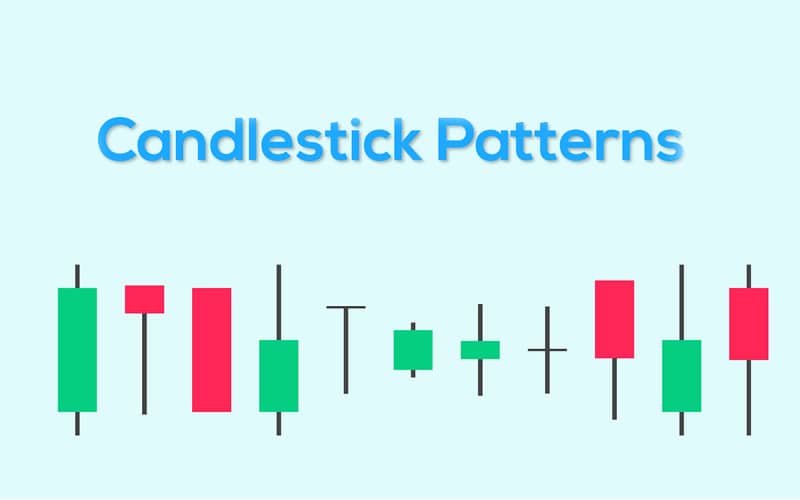Candlestick patterns are the heart of technical analysis and used in trading all kinds of financial instruments in the capital markets. Technical analysts rely on candlestick patterns to make informed trading decisions in forecasting long-term and short-term direction of prices. Master the art of studying and interpreting candlestick patterns, and you are sure to make a fortune trading any security in the capital markets.
A candlestick chart comprises individual candles that show how price oscillates up and down. A single candlestick depicts the price point where price opened, closed, and the highest level and lowest point it clocked.
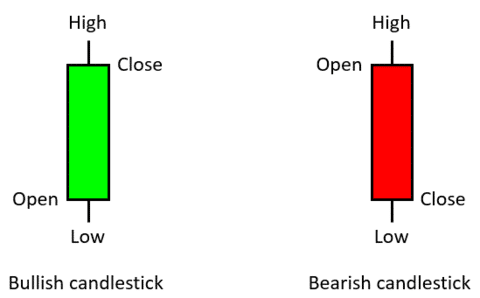
In this case, the open price indicates the first price traded on the formation of a new candle. The high price suggests the highest price traded during a given period. The low price signifies the price at the bottom of the lower wick/shadow. The close price, on the other hand, indicates the last amount traded during a given period.
Therefore a candlestick pattern is simply the movement in prices shown graphically on chart regardless of security or asset under study. Candlesticks depict the battle between bulls, the buyers, and bears, the sellers, over a given period. The battle always results in an outright winner, as illustrated by the direction that the price ends up moving.
Candlestick formations can give lots of insight into the current market formation signaling a tussle between bears and bulls. Likewise, candlestick formations such as a hammer, shooting star, or hanging man signify current market sentiment, which can provide valuable information on who is in control.
Different candlestick patterns signify who is in control. Therefore, bulls vs. bear’s scenario.
Bulls in Full Control: Three White Soldiers
The three white soldiers occur whenever the market moves low, reverses, and starts to move higher. It happens when three consecutive bull candlesticks open and close above each other.

Whenever the pattern occurs, it shows that bulls are in full control as price tends to open and close higher. Likewise, the candlestick pattern shows a steady advance in buying pressure.
Bulls are losing control: Hanging Man
The hanging man candlestick pattern forms at the end of an uptrend or whenever price moves up for an extended period. The candlestick pattern results in the formation of a candlestick in the shape of a hammer.
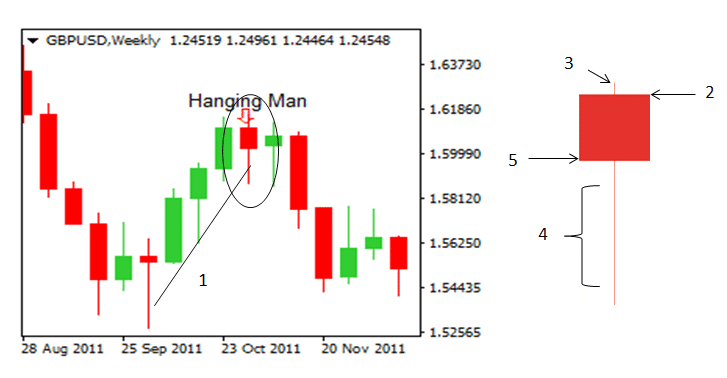
Whenever the hammer candlestick forms, it indicates that there was significant sell-off during the day. However, buyers push the price higher again. This sell-off often indicates that bears are slowly coming in and that bulls are slowly losing control.
Bulls have taken control: Hammer Candlestick
The hammer candlestick pattern is commonly used to identify situations where buyers have taken control of bears. When price moves lower over an extended period, the pattern forms lower-lows from where bulls come into play and try to push the price higher.
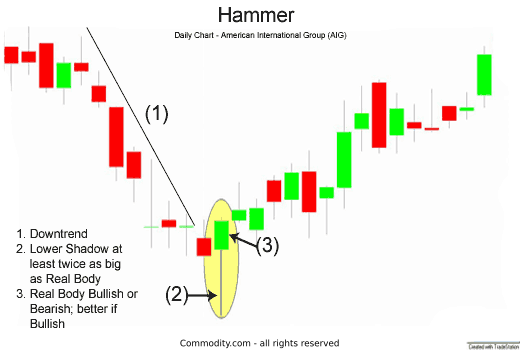
The hammer candlestick shows that although there was selling pressure during the day, bulls have taken control. In this case, the hammer candlestick indicates that a more robust bull market is about to come into play.
Bulls Remain in Control: Piercing Line Candlestick Pattern
Bulls or buyers do come under pressure as bears try to push prices lower. The result is usually a piercing line candlestick pattern. The pattern is synonymous with a long red candlestick, followed immediately by a long candlestick that manages to pierce through the middle line of the previous long bearish candlestick.

The piercing line candlestick pattern indicates intense buying pressure as bulls come out fighting, pushing the price higher as soon as bears try to sell it lower.
Bears are Losing Control: Morning Star Candlestick Pattern
The morning star candlestick pattern indicates that bears are slowly losing control and that bulls are about to push prices higher after an extended downtrend. The three stick candlestick pattern starts with one long bearish candlestick that is followed by one short-bodied candle. A long bullish candlestick often accompanies the short-bodied candlestick.
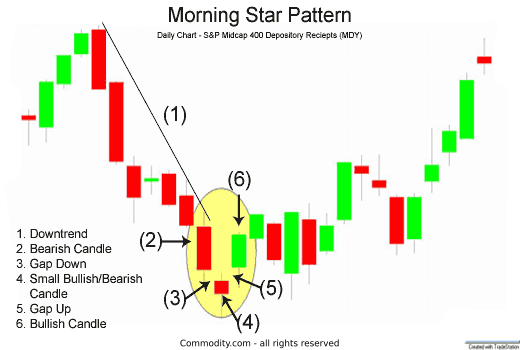
Whenever a long bullish candlestick precedes the short-bodied candlestick, the same indicates that selling pressure is subsiding and that buyers or bulls are about to push prices higher.
Bears have taken control: Bearish Engulfing
Whenever a bearish engulfing occurs in a candlestick pattern, it indicates bears are slowly overpowering bulls. The candlestick pattern occurs at the end of an uptrend indicating bears have taken control.
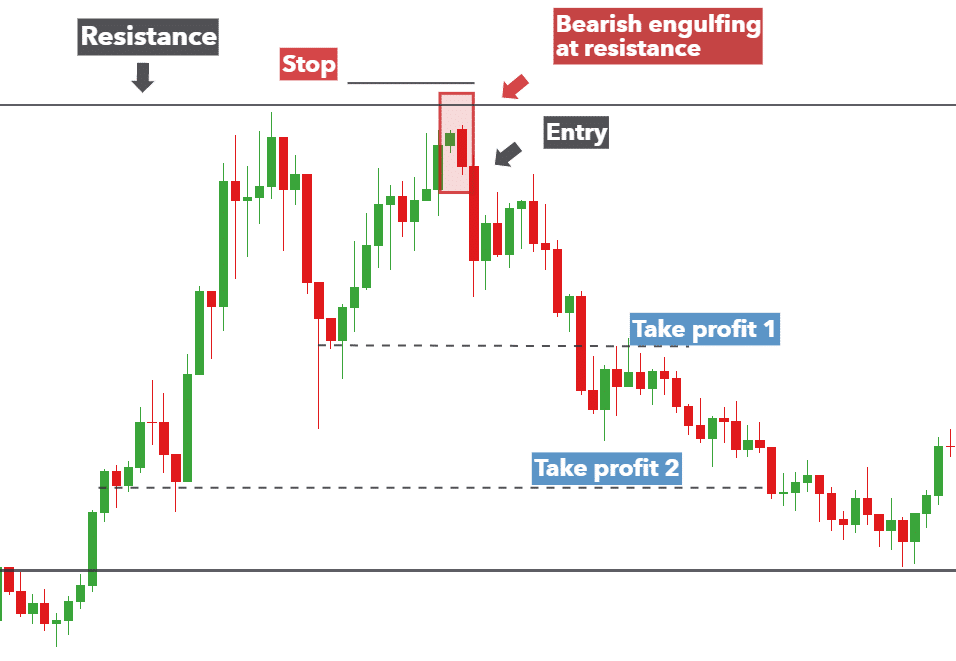
The bearish candlestick pattern is synonymous with a large bearish candlestick that engulfs the previous bull candle. The lower the bearish candle goes, the stronger the bearish pressure indicating more bears in the market.
Bears in Full Control: Three black crows
The three black crows candlestick patterns signify immense bearish pressure in the market, signifying bears are pushing prices down hard. The pattern comprises three consecutive long bearish candles, opening and closing below each successive candlestick.
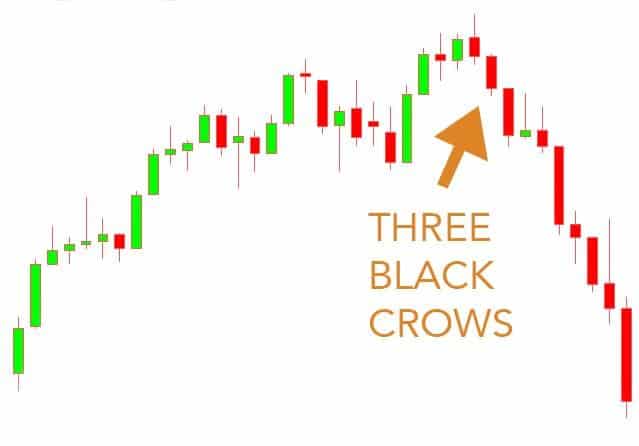
Technical analysts interpret the candlestick pattern as the start of a bearish downtrend, and that bears are in full control having overpowered bulls.
Bears remain in Control/ Slightly Bearish: Falling Three Methods
The falling three methods are used to affirm the continuation of a bearish trend, and that bears remain in control.
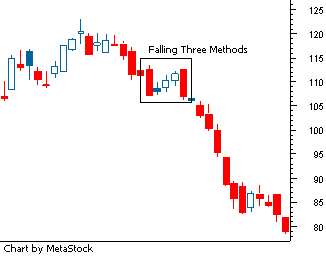
The pattern occurs when a long bearish candlestick is immediately followed by three small bull candlesticks that are afterward followed by a long bearish control. The second long bearish candle signifies that bears have overpowered bulls trying to push prices higher.
Slightly Bullish: Bearish Harami
The bearish Harami pattern occurs whenever price moves up for an extended period. Whenever exhaustion starts to kick in, a small bearish candlestick emerges engulfed by a much bigger and bullish previous candlestick.
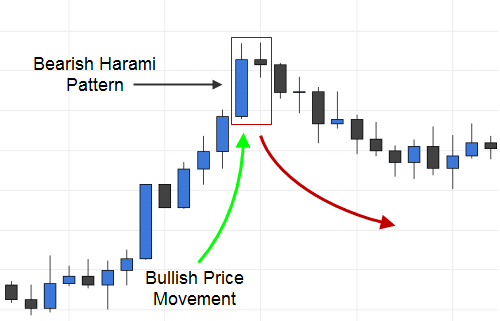
The bearish Harami candlestick pattern signifies disparity in the market. While the overall market is in an uptrend and the mood is bullish, the emergence of small bearish candle signals that bears are slowly coming in and trying to push prices lower.
Conclusion
Candlestick patterns show a significant relationship between market prices and supply and demand forces in the market. The patterns show how bulls and bears are jostling for positions resulting in price moving up and down. The patterns also indicate the highs and the lows in the market and the points where the market opened and closed.
Contrary to perception, candlestick patterns are easy to identify and comprehend, therefore making it easy to make informed decisions on the direction, price is likely to move. Likewise, the patterns provide accurate information on the interaction between bulls and bears, regardless of the time frame in use. Besides, any trader can identify whether a market is bearish or bullish with a simple glance on how candlesticks align themselves in a chart.
